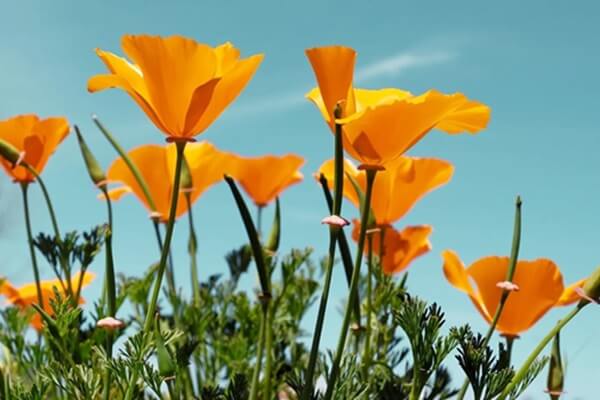California poppies are best known for their vibrant orange, gold, and yellow blooms. These resilient plants are pretty famous among gardeners for their low maintenance and ability to thrive in various conditions. Today, this article will provide everything you need to know to grow and care for California poppies in your garden successfully.
Quick Facts
- COMMON NAME: California Poppy
- GENUS NAME: Eschscholzia californica
- PLANT TYPE: Annual
- LIGHT: Sun
- HEIGHT: 6 to 12 inches
- WIDTH: null to 1 foot
- FLOWER COLOR: Orange, Pink, Red, White, Yellow
- FOLIAGE COLOR: Blue/Green
- SEASON: Fall Bloom, Spring Bloom, Summer Bloom
- PROPAGATION: Seed
Types of California Poppy
California poppies are sun-loving plants that are native to California. However, these plants can thrive in a variety of climates which makes them popular choices for gardens across the country. Similarly, these plants have several types such as,
Classic Orange California Poppy
Classic Orange California Poppy has bright orange flowers with delicate, fern-like foliage. These are often found growing wild in fields and along roadsides.
Golden West California Poppy
Golden West is a cultivar of the California poppy which produces large, golden-yellow flowers. This variety is famous for its bold color and prolific blooming habit.
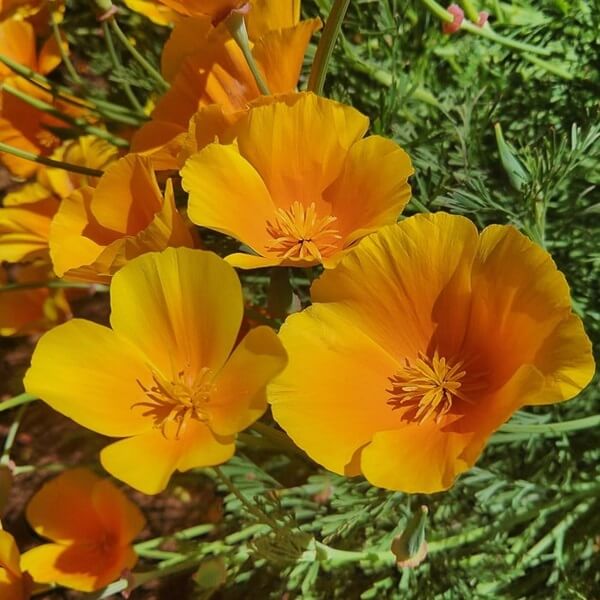
Thai Silk California Poppy
Thai Silk California poppies feature large, silky flowers and a range of colors, including shades of orange, yellow, pink, and cream.
White Linen California Poppy
White Linen is a cultivar that features pure white flowers, providing a striking contrast to the typical orange blooms of California poppies. This variety adds elegance and sophistication to garden landscapes.
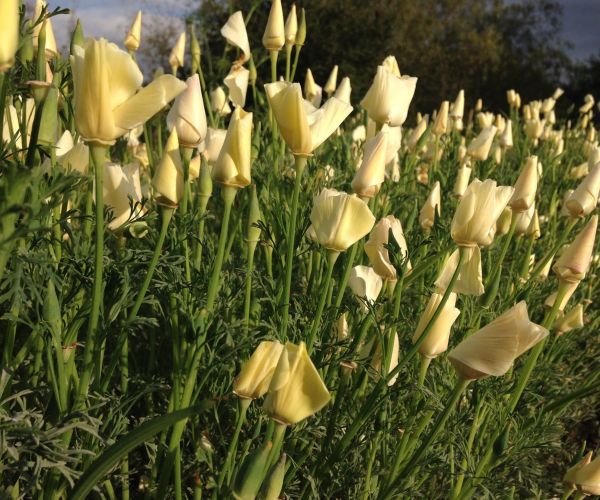
Double-flowered California Poppy
Double-flowered California Poppy also known as Eschscholzia Californica has densely packed petals which make them a fuller, more lush appearance compared to the single-flowered varieties. Double-flowered cultivars are available in several colors including orange, yellow, and pink.
Selecting the suitable Location
California poppies are sun-loving plants that thrive in full sun and well-drained soil. If you are going to plant California Poppy then select a spot that receives at least 6-8 hours of sunlight per day.
Planting California Poppies
California poppies are grown from seeds. It can be planted directly into the garden or started indoors in biodegradable pots.
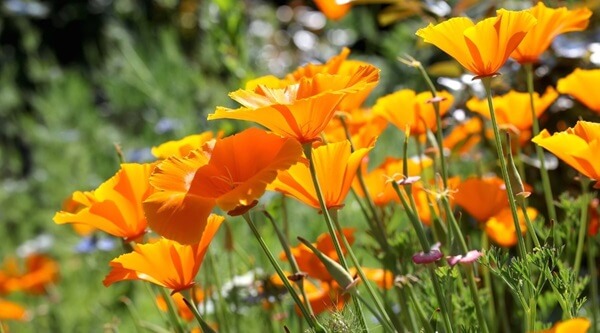
You can plant the seeds in the early spring or in the fall for blooms the following spring. As California poppies need sunlight to sprout, scatter seeds lightly over the soil surface and lightly press them into the soil. It is important to keep the soil consistently moist until seedlings emerge, usually within 10 to 15 days.
Soil and Water
California Poppy does best in Sandy or rocky soils. This plant is drought tolerant and too wet soil can kill off poppies. They don’t prefer clay soil, because they need soil to be well-draining.
California poppies do not need to water frequently as they are good candidates for drought-resistant xeriscapes. In the spring season, the rainfall is usually sufficient to provide enough water for the plants.
How much Temperature does California Poppy need to grow? Humidity?
California poppies thrive in temperatures between 65°F (15°C) and 75°F (24°C). They can tolerate cooler temperatures down to around 40°F (4°C) and can suffer dormancy due to excessive heat, so providing some afternoon shade in hot climates can help protect them from excessive heat.
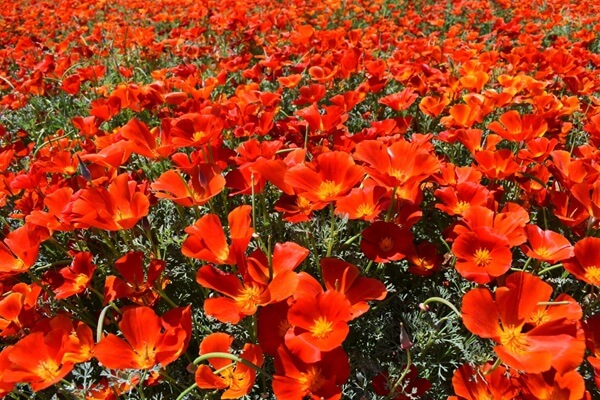
Moreover, California poppies prefer low to moderate humidity levels, similar to the conditions found in their native Mediterranean climate.
Fertilizing
California poppies are light feeders and generally do not require a lot of added nutrients or even nutrient-rich soil to thrive.
However, you can apply a balanced, slow-release fertilizer in early spring if your soil is poor in nutrients by following the manufacturer’s instructions.
Also Read: Everything You Need To Know About Growing Magnolias In Containers
Pest and Disease Control
California poppies are low maintenance and ability to thrive in various conditions. These plants are relatively pest and disease-resistant. However, sometimes pests like aphids, slugs, or snails can bother your California poppies, so monitor them regularly for signs of infestation and handpick pests or spray them with water to dislodge them.
Wilting, Yellowing, or Browning
Insufficient water can lead to various symptoms such as leaf wilt, yellowing, browning, or leaf drop. It is recommended to water deeply every few days instead of giving frequent light water.
In case of prolonged high temperatures reaching the 90s, the plants will naturally die back due to the heat, which is normal.
They usually return once the temperature cools down. During their dormancy period, they will not require any additional care until they return.
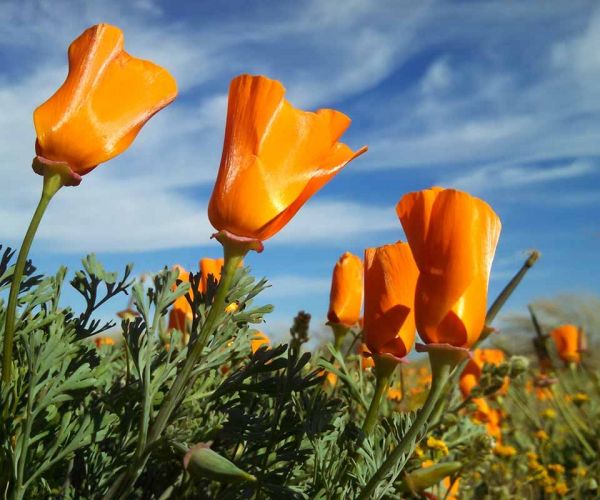
Deadheading and Pruning
Removing fading or dead flowers from plants helps to keep plants looking attractive and encourages more blooms. Similarly, Deadheading also prevents self-seeding, which can lead to overcrowding.
You can pinch off faded flowers as they wither by using clean, sharp scissors or pruning shears. Similarly, cut down the foliage to ground level to tidy up the garden at the end of the growing season to promote healthy regrowth.
Can California Poppy be Propagated by using stems?
No, California poppies are a self-seeding plant that produces new plants every year. To collect seeds for propagation, you need to allow some flowers to mature and develop seed pods.
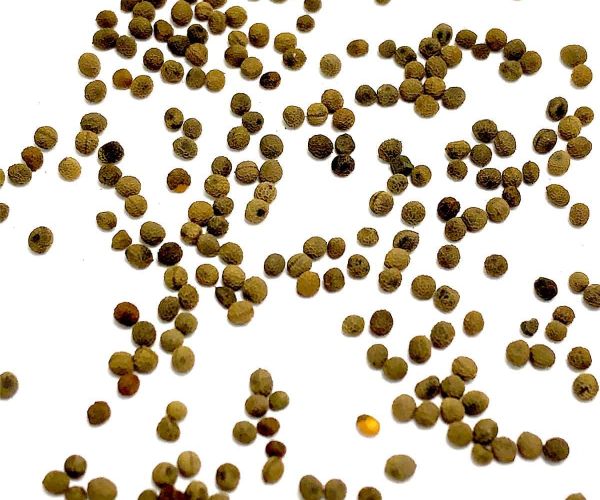
Once the pods have turned brown and dried, it is time to harvest them and collect the seeds. Make sure to store your seeds in a cool and dry location until you are ready to sow them.
Frequently Asked Questions
When is the best time to plant California poppies?
You can plant California poppy seeds in early spring after the last frost date or in the fall for blooms the following spring.
How much sunlight do California poppies need?
California poppies are sun-loving plants that thrive in full sun. For optimal growth and flowering, it needs at least 6 hours of direct sunlight per day.
How often should I water California poppies?
California poppies are drought-tolerant and prefer infrequent, deep watering.
Is it possible to grow California poppies in pots?
Yes, you plant California poppies in at least a 200mm wide pot with adequate drainage holes.
How long do California poppies bloom?
California poppies typically bloom from late spring to early summer. However exact blooming period may differ depending on growing conditions and climate.
You may also like to read: How to Grow and Care for Schefflera (Umbrella Plant)
